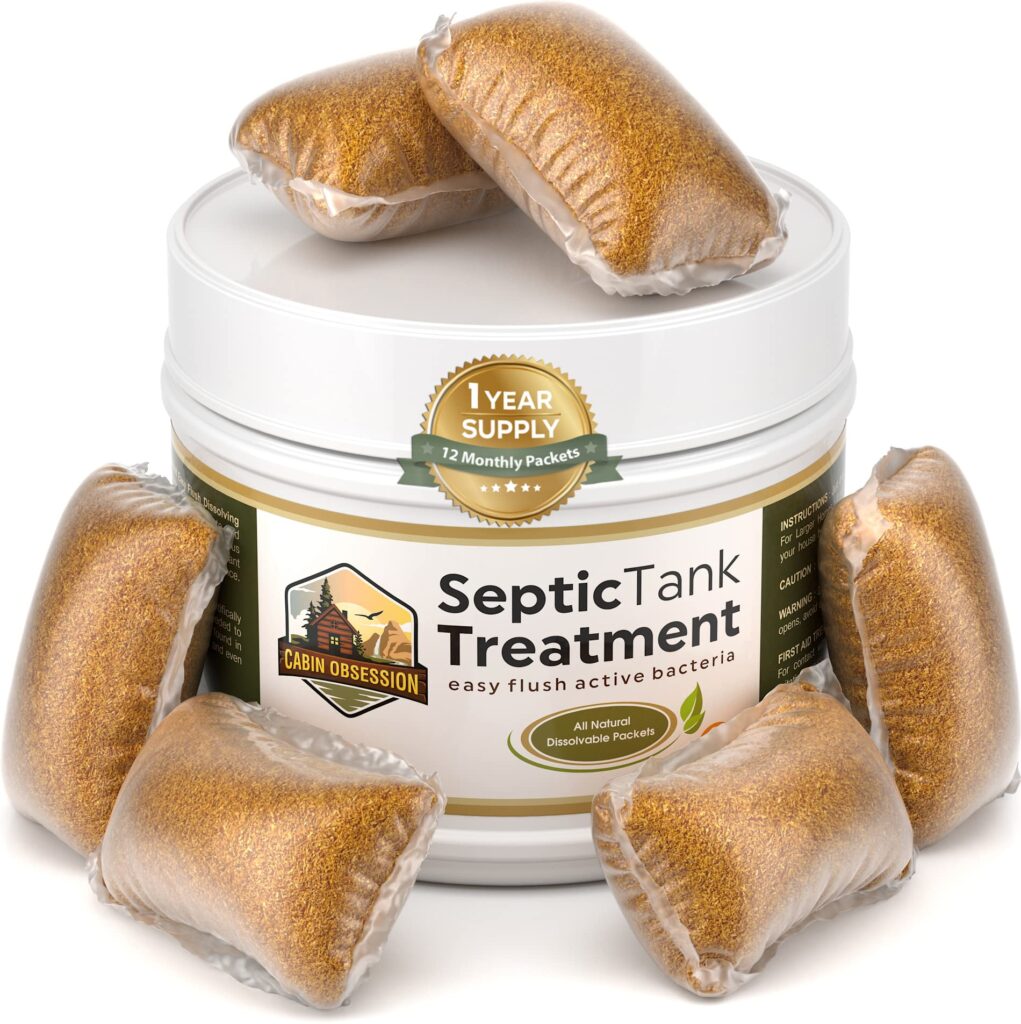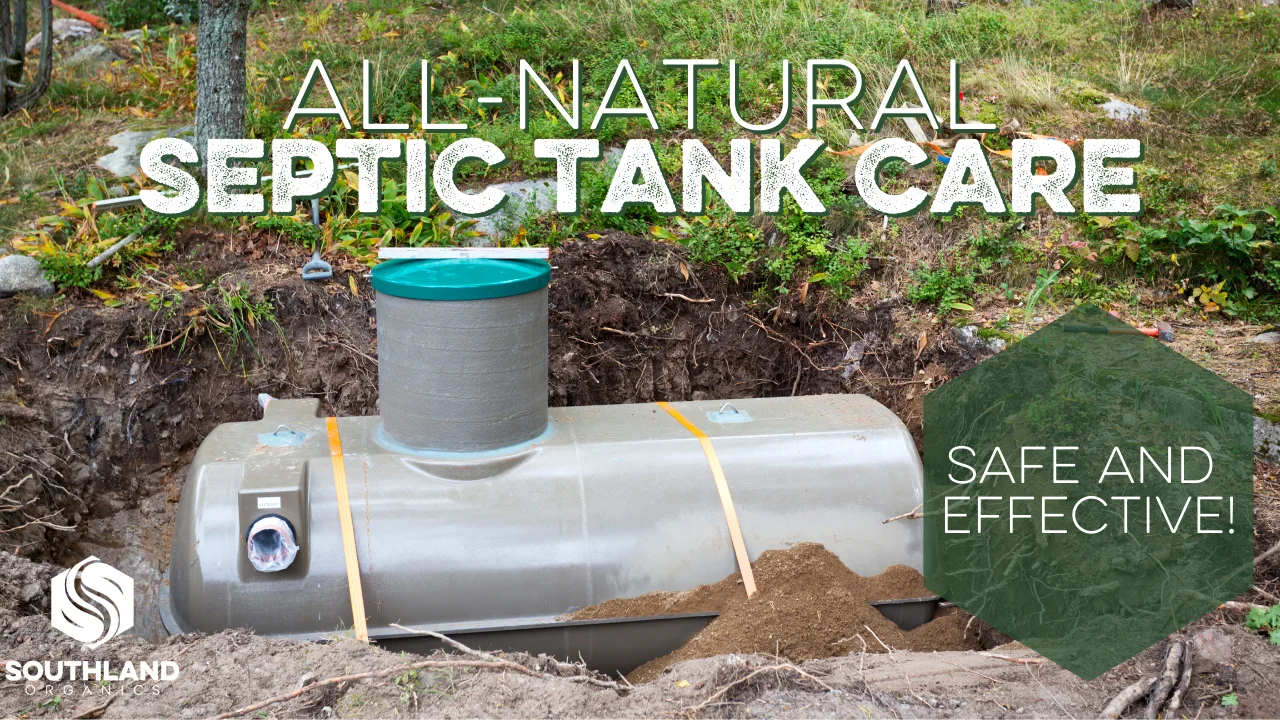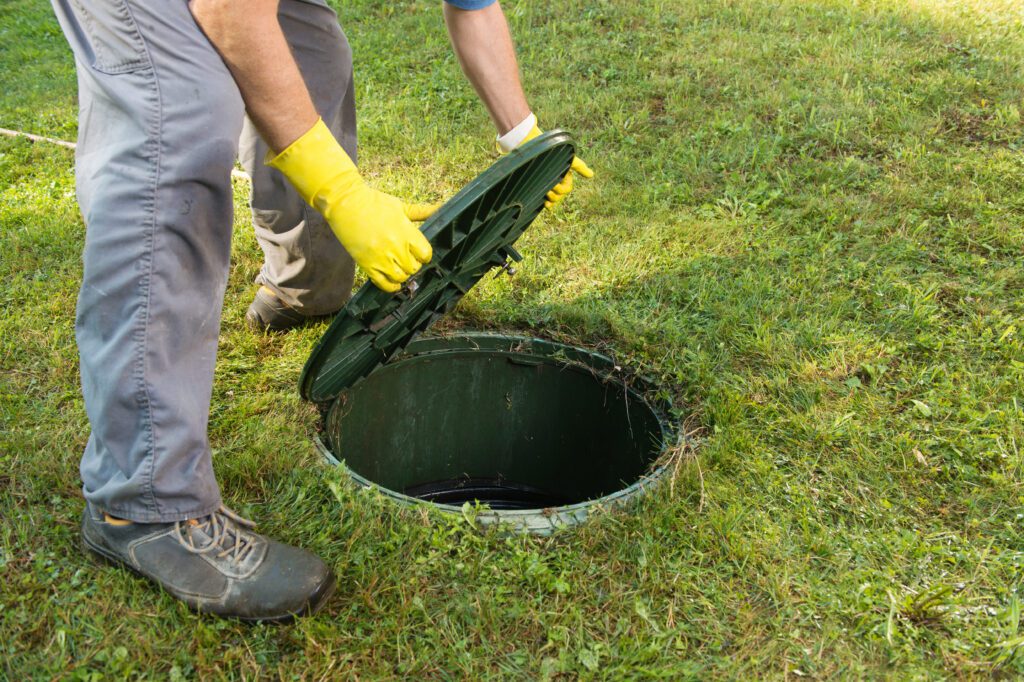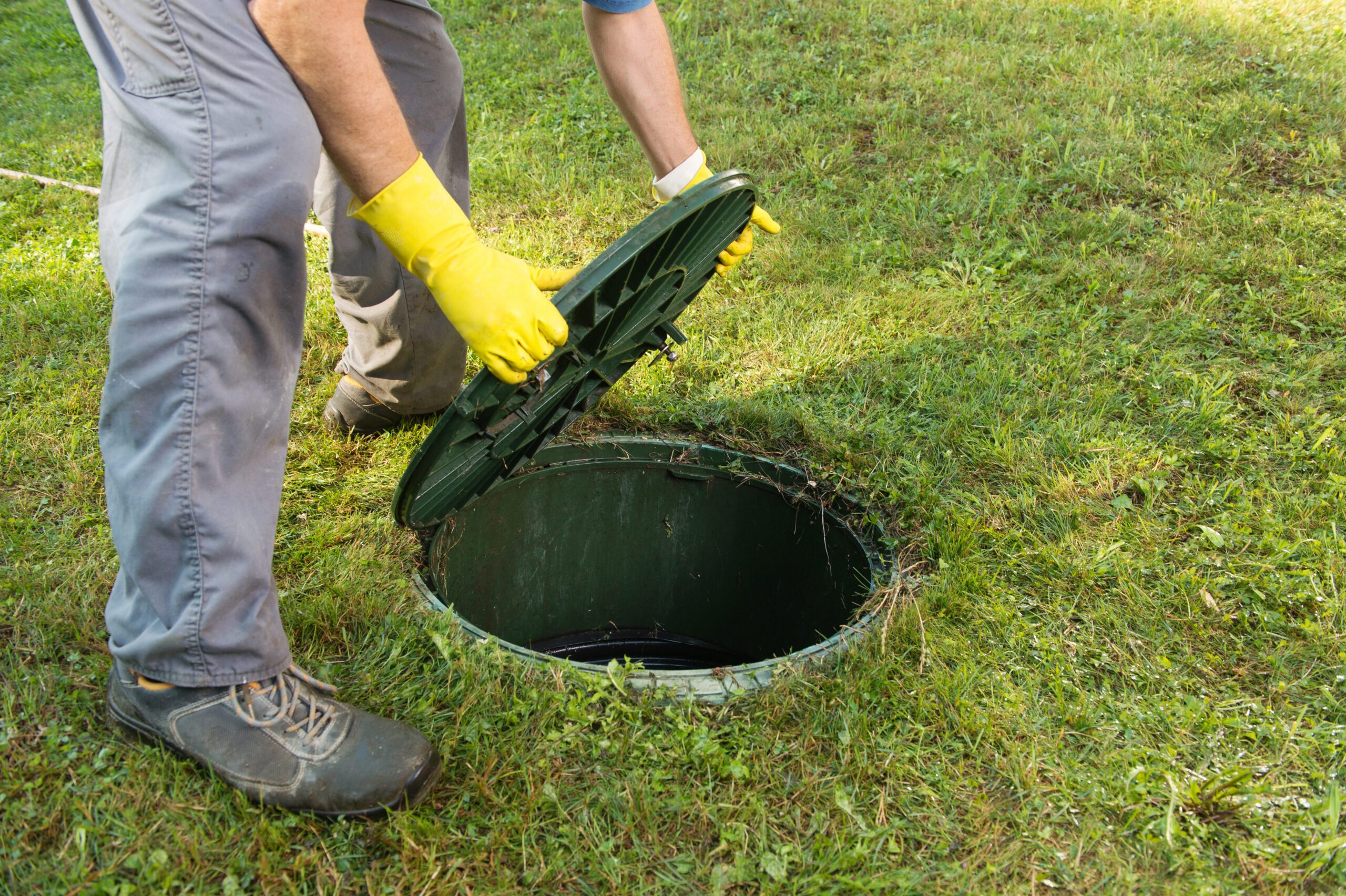If you’re in need of effective solutions for your septic tank, look no further. This article will provide you with a detailed overview of the top septic tank treatments available on the market today. Whether you’re facing issues with clogs, odors, or lack of bacterial activity, we’ve got you covered. Discover the power of these treatments and get ready to say goodbye to septic tank troubles once and for all.

1. Understanding Septic Tank Treatments
1.1 What is a Septic Tank?
A septic tank is an underground wastewater treatment system commonly used in rural areas or homes that are not connected to a municipal sewer system. It is a vital component of the plumbing system as it collects, treats, and disposes of wastewater from toilets, showers, sinks, and laundry. The septic tank operates by allowing solid waste to settle and decompose, while the liquid portion is released into the drain field for further treatment.
1.2 Why Septic Tank Treatments are Important
Septic tank treatments play a crucial role in maintaining the health and functionality of the septic system. Proper treatment helps to break down and digest the waste, preventing the accumulation of solids that can clog the system. Treatments also help to control odors, balance bacterial levels, and improve the overall efficiency of the septic tank. Regular treatments are essential to prevent costly repairs, system failures, and environmental contamination.
1.3 Common Issues with Septic Tanks
Septic tanks can encounter various problems if not properly maintained. Some common issues include clogged pipes, drain field failure, foul odors, slow drains, and sewage backups. These issues can arise due to a lack of regular maintenance, excessive water usage, improper disposal of non-biodegradable materials, or the introduction of harmful chemicals into the system. Understanding and addressing these issues promptly can prevent further damage and ensure the longevity of your septic tank.
1.4 Types of Septic Tank Treatments
There are several types of septic tank treatments available, each with its own benefits and considerations. The main categories of treatments include chemical treatments, natural treatments, enzyme treatments, bacterial treatments, household items and DIY treatments, and advanced treatment systems. Each treatment option utilizes different mechanisms to break down waste, promote biological activity, and maintain a healthy septic system. By exploring the various treatment options, you can identify the most suitable approach for your specific needs.
2. Chemical Treatments
2.1 How Chemical Treatments Work
Chemical treatments for septic tanks typically consist of inorganic compounds that help accelerate the breakdown of waste. These treatments often contain enzymes, surfactants, or acids that target and break down solids, grease, and other organic materials present in the septic tank. Chemical treatments work by stimulating the natural biological processes in the tank and enhancing the decomposition of waste. Some treatments also contain fragrances that help control odors.
2.2 Pros and Cons of Chemical Treatments
Chemical treatments offer several benefits, such as convenient application, quick results, and effective breakdown of waste. They can reduce odors, unclog pipes, and help prevent backups. However, there are also some potential drawbacks to consider. Chemical treatments may disrupt the natural balance of bacteria in the septic tank if used excessively. Additionally, certain chemicals may be harmful to the environment and can leach into groundwater if not used correctly. It is important to carefully follow the instructions provided by the manufacturer when using chemical treatments.
2.3 Popular Chemical Treatments on the Market
There are numerous chemical treatments available on the market designed specifically for septic tank maintenance. Some popular options include Rid-X, Roebic K-37, and Green Gobbler. These treatments are formulated to target and break down organic waste, grease, and other substances that can cause blockages or build-up in the septic system. It is recommended to research different products and read customer reviews to ensure you choose a reliable and effective treatment.
2.4 Best Practices for Using Chemical Treatments
To achieve optimal results and minimize any potential risks, it is important to follow best practices when using chemical treatments. These include:
- Read and follow the instructions provided by the manufacturer carefully.
- Use recommended dosages and avoid excessive use, as it can harm the bacterial balance in the tank.
- Apply the treatment directly to the toilet or sink closest to the septic tank for maximum effectiveness.
- Avoid introducing harmful chemicals, such as bleach or antibacterial soaps, into the septic system as they can counteract the treatment.
- Regularly monitor the performance of the septic system, and if issues persist, consider professional inspection and maintenance.
By adhering to these best practices, you can effectively utilize chemical treatments and maintain the health of your septic tank.
3. Natural Treatments
3.1 Benefits of Natural Treatments
Natural treatments for septic tanks offer an environmentally-friendly alternative to chemical treatments. They utilize naturally derived ingredients that promote the growth of beneficial bacteria, which aid in the breakdown of waste. Natural treatments are becoming increasingly popular due to their non-toxic nature, eco-friendliness, and ability to maintain a balanced microbial ecosystem within the tank. Additionally, natural treatments can be cost-effective and easy to use.
3.2 Effective Natural Ingredients for Septic Tank Treatment
Several natural ingredients have proven to be effective in septic tank treatment. These include:
- Baking soda: Baking soda can help balance the pH levels in the septic tank and control odors.
- Vinegar: Vinegar is a natural disinfectant that can control the growth of harmful bacteria and eliminate odors.
- Yeast: Adding yeast to the septic tank can promote bacterial growth and enhance the breakdown of waste.
- Beneficial bacteria supplements: These supplements contain strains of bacteria specifically selected to aid in waste digestion and prevent clogs.
3.3 Homemade Natural Septic Tank Treatments
Homemade natural treatments can be easily prepared using common household items. One example is a mixture of baking soda and vinegar, which can be poured down drains to control odors and maintain a healthy septic tank. Another option is creating a yeast mixture by dissolving yeast in warm water and pouring it into the toilet bowl. These homemade treatments are cost-effective and provide a natural way to support the microbial population in your septic system.
3.4 Considerations for Using Natural Treatments
While natural treatments offer many benefits, it is important to consider some factors before incorporating them into your septic tank maintenance routine. Natural treatments may not be as fast-acting as chemical treatments, and it may take some time to see noticeable results. Additionally, they may need to be applied more frequently compared to other treatments. Regular monitoring of the septic system’s performance is essential to ensure that the natural treatments are effective in maintaining its health and functionality.
4. Enzyme Treatments
4.1 How Enzyme Treatments Work
Enzyme treatments for septic tanks utilize a combination of enzymes and bacteria to break down organic waste. Enzymes are proteins that act as catalysts to speed up biological processes. In septic tank treatments, enzymes assist in the decomposition of solids and facilitate the breakdown of complex molecules into simpler forms. The introduced bacteria work in conjunction with the enzymes to enhance the microbial activity in the tank and aid in the digestion of waste.
4.2 Advantages and Disadvantages of Enzyme Treatments
Enzyme treatments offer several advantages. They are non-toxic, biodegradable, and environmentally friendly. Enzyme treatments also help control odors, prevent clogs, and improve the overall efficiency of the septic system. However, it is important to note that enzyme treatments might not provide immediate results, and regular application is necessary for sustained effectiveness. Additionally, some enzyme treatments may require specific temperature ranges or pH levels to work optimally.
4.3 Popular Enzyme Treatments on the Market
Several enzyme treatments are available on the market, each formulated with specific enzymes and bacterial strains to target different waste types. Some popular enzyme treatments for septic tanks include Bio-Clean, Septic Maxx, and GreenPig. These treatments are designed to break down solids, grease, and other waste materials, promoting a healthy septic system. It is advisable to choose an enzyme treatment that matches the specific needs of your septic tank and follow the manufacturer’s directions for optimal results.
4.4 Dos and Don’ts of Enzyme Treatments
To ensure the effectiveness of enzyme treatments and prolong the lifespan of your septic tank, consider the following dos and don’ts:
Dos:
- Follow the manufacturer’s instructions regarding dosage and application frequency.
- Use enzyme treatments in combination with regular maintenance tasks, such as pumping the septic tank, to maximize effectiveness.
- Use treatments during periods of low water usage to allow enzymes to work more effectively.
- Monitor the performance of the septic system and adjust treatment frequency if necessary.
Don’ts:
- Avoid using chemical treatments simultaneously with enzyme treatments, as they may counteract each other.
- Do not introduce excessive amounts of fats, oils, or non-biodegradable materials into the septic system, as they can hinder the effectiveness of the enzyme treatment.
- Do not rely solely on enzyme treatments to address significant septic tank issues. Consult a professional plumber or septic system expert for comprehensive assessments and solutions.
By following these guidelines, you can optimize the benefits of enzyme treatments and contribute to the long-term health of your septic tank.

5. Bacterial Treatments
5.1 Role of Bacteria in Septic Tank Maintenance
Bacteria play a crucial role in the maintenance and functionality of septic tanks. In the septic system, naturally occurring bacteria break down and digest organic waste, transforming it into harmless byproducts. These bacteria thrive in an environment with optimal pH levels and an appropriate balance of nutrients. However, external factors such as excessive water use, introduction of harmful chemicals, or prolonged use of antibiotics can disrupt the balance of bacteria in the tank. Bacterial treatments aim to restore and maintain this balance for effective waste breakdown.
5.2 Benefits and Limitations of Bacterial Treatments
Bacterial treatments offer several benefits for septic tank maintenance. They help replenish the bacterial population in the tank, restoring the essential biological activity necessary for waste digestion. Bacterial treatments can improve overall system efficiency, reduce odors, and prevent the accumulation of solids. However, it is important to note that bacterial treatments may not provide immediate results, and regular application is necessary for continued effectiveness. Additionally, there are limitations to the effectiveness of bacterial treatments in certain situations, such as when excessive grease or non-biodegradable materials are present in the septic system.
5.3 Types of Bacterial Treatments Available
There are different types of bacterial treatments available for septic tanks, each catering to specific needs. These include:
- Bacterial powders: Powders contain a concentrated blend of bacteria and enzymes designed to break down solids and promote efficient waste digestion.
- Bacterial liquids: Liquids typically consist of a suspension of bacteria and enzymes in a liquid carrier. They can be poured directly into the septic tank or added to drains and toilets.
- Bacterial packets: Packets contain pre-measured doses of bacteria and are convenient for regular treatment applications.
When selecting a bacterial treatment, consider the specific needs of your septic system and choose a product that addresses those concerns.
5.4 Guidelines for Using Bacterial Treatments
To ensure the effectiveness of bacterial treatments, it is important to follow some key guidelines:
- Choose a bacterial treatment that matches the specific needs and characteristics of your septic system.
- Follow the manufacturer’s directions regarding dosage, application frequency, and storage instructions.
- Apply the treatment directly into the septic tank or down a toilet nearest to the tank.
- Avoid using antibacterial soaps or harsh chemicals that can kill the beneficial bacteria in the system.
- Regularly monitor the performance of the septic system and adjust treatment frequency if necessary.
By adhering to these guidelines and incorporating bacterial treatments into your septic tank maintenance routine, you can support the biological activity within the tank and maintain a healthy and efficient system.
6. Household Items and DIY Treatments
6.1 Unexpected Household Items for Septic Tank Treatment
Several unexpected household items can be useful in septic tank treatment. These items are often readily available and can be utilized to promote the health of your septic system. Some examples include:
- Coffee grounds: Coffee grounds can introduce beneficial bacteria to the septic tank, aiding in waste breakdown.
- Sugar: A small amount of granulated sugar can act as a food source for bacteria, promoting their growth and activity.
- Plain yogurt: Yogurt with live bacterial cultures can introduce or replenish beneficial bacteria in the septic system.
- Citrus peels: The natural acids present in citrus peels can help control odors and deter the growth of harmful bacteria.
6.2 Step-by-Step DIY Septic Tank Treatments
DIY septic tank treatments provide an affordable and accessible option for homeowners. Here is a simple step-by-step guide for an effective DIY treatment:
- Create a mixture of ½ cup of baking soda and 1 gallon of warm water.
- Stir the mixture until the baking soda is dissolved.
- Slowly pour the mixture down the drains closest to the septic tank, such as toilets or sinks.
- Repeat this treatment once a month to maintain a healthy septic system.
It is important to note that while DIY treatments can be effective, they may not address all septic tank issues. Regular maintenance and professional inspections are still necessary to ensure the optimal functioning of the septic system.
6.3 Safety Considerations for DIY Treatments
When utilizing household items and DIY treatments for septic tanks, it is essential to consider safety. Some key safety considerations include:
- Avoid introducing excessive amounts of household items into the septic system, as this can disrupt the delicate balance of bacteria.
- Do not use chemical treatments or harsh cleaning agents in conjunction with DIY treatments, as they may have adverse reactions.
- Follow the recommended dosages and application methods for each household item to prevent any negative effects on the septic system.
- If issues persist or worsen, consult a professional plumber or septic system expert for further guidance and assistance.
By prioritizing safety and using household items responsibly, you can harness the benefits of DIY treatments while maintaining the integrity of your septic tank.
6.4 Managing and Maintaining Your Septic System DIY
Aside from treatments, there are several additional steps you can take to manage and maintain your septic system. These DIY practices can contribute to the optimal functioning and longevity of your septic tank:
- Limit water usage: Excessive water usage can overwhelm the septic system and hinder its effectiveness. Use water-conserving fixtures, repair leaks promptly, and spread out laundry and dishwashing loads over time.
- Proper waste disposal: Only flush and dispose of biodegradable materials down the drains and toilets. Avoid the use of chemical cleaners, non-biodegradable wipes, and excessive amounts of fats or oils.
- Regular inspections: Conduct visual inspections of the septic tank area to check for signs of leaks, pooling water, or vegetation growth. Regular inspections can help detect issues before they escalate.
- Pumping the tank: Schedule routine septic tank pumping every 3-5 years, or as recommended by a professional, to remove accumulated solids and prevent clogs.
By implementing these DIY practices, you can actively contribute to the health and functionality of your septic system.

7. Advanced Treatment Systems
7.1 Overview of Advanced Septic Tank Treatments
Advanced septic tank treatments refer to innovative systems designed to enhance the treatment and disposal of wastewater. These systems utilize advanced technologies, such as aerobic treatment units (ATUs), media filters, or drip irrigation systems, to provide more efficient and environmentally-friendly solutions. Advanced treatment systems often incorporate additional stages of filtration or chemical processes to further treat the effluent before it is released into the environment.
7.2 Benefits and Challenges of Advanced Systems
Advanced septic tank treatments offer several benefits over traditional systems. These benefits include enhanced treatment efficiency, reduced environmental impact, and improved effluent quality. Advanced systems are often more adaptable to various soil conditions and can be designed to meet specific site requirements. However, there are some challenges associated with advanced systems, including higher installation and maintenance costs, more complex operation requirements, and the need for professional expertise for installation and servicing.
7.3 Examples of Advanced Septic Tank Treatments
There are various examples of advanced septic tank treatments available to homeowners. These include:
- Aerobic treatment units (ATUs): ATUs introduce oxygen into the septic tank, facilitating more effective breakdown of waste. They require electricity to operate and often have an additional treatment stage to further purify the effluent.
- Media filters: Media filters utilize layers of sand, gravel, or other media to filter and treat wastewater. They provide advanced treatment by removing fine particles, suspended solids, and pathogens from the effluent.
- Drip irrigation systems: Drip irrigation systems distribute treated effluent over a designated area through a network of small pipes with emitters. This system allows for controlled release and uniform distribution, reducing the strain on the environment.
7.4 Considerations for Installing an Advanced System
Before considering the installation of an advanced septic tank treatment system, it is important to consider various factors:
- Site evaluation: Engage a professional to conduct a thorough site evaluation, including soil testing, to assess the feasibility of an advanced system and determine the appropriate design.
- Regulatory requirements: Understand local regulations and permits required for the installation and operation of advanced systems.
- Maintenance and servicing: Advanced systems may require more frequent maintenance and professional servicing. Ensure that you have access to qualified technicians for routine inspections and necessary repairs.
- Cost analysis: Evaluate the installation and long-term maintenance costs of advanced systems compared to traditional septic systems to determine the financial feasibility.
By carefully considering these factors and consulting with professionals, you can make an informed decision regarding the installation of an advanced septic tank treatment system.
8. Regular Maintenance and Care
8.1 The Importance of Regular Maintenance
Regular maintenance is essential for the longevity and efficient operation of a septic tank. Neglecting maintenance can lead to issues such as clogs, backups, and system failures, resulting in costly repairs and potential environmental contamination. Regular maintenance helps identify and address minor issues before they escalate, ensuring that the septic system operates effectively and efficiently.
8.2 Key Maintenance Tasks for Septic Tanks
To maintain a healthy septic system, several key maintenance tasks should be performed:
- Regular pumping: Schedule septic tank pumping every 3-5 years, or as recommended by a professional, to remove accumulated solids and prevent clogs.
- Regular inspections: Conduct visual inspections of the septic tank, drain field, and other components to check for signs of leaks, backups, or vegetation growth. Early detection can prevent more significant issues.
- Monitor water usage: Keep track of water usage to avoid excessive strain on the septic system. Repair leaks promptly, use water-conserving fixtures, and spread out laundry and dishwashing loads over time.
- Proper waste disposal: Only flush and dispose of biodegradable materials down the drains and toilets. Avoid using chemical cleaners, non-biodegradable wipes, and excessive amounts of fats or oils.
8.3 Tips for Preventing Septic Tank Issues
Prevention is key when it comes to septic tank maintenance. By following these tips, you can minimize the risk of issues:
- Avoid flushing non-biodegradable materials, such as wipes, tampons, diapers, or cigarette butts.
- Do not pour grease, oil, or excessive amounts of chemicals down the drains, as they can clog the system and harm the beneficial bacteria.
- Be cautious with the use of cleaners containing bleach or antibacterial agents, as they can disrupt the bacterial balance in the septic tank.
- Minimize water usage during periods of heavy rain or flooding to prevent overloading the drain field.
- Do not park or build structures over the drain field, as it can impede proper drainage and lead to system failure.
8.4 Signs That Your Septic Tank Needs Professional Attention
Certain signs indicate that your septic tank requires professional attention. These include:
- Foul odors inside or outside the house, indicating a potential issue with the septic system.
- Slow drains or toilets that are not flushing correctly, suggesting a blockage or backup.
- Standing water in the drain field or near the septic tank, which may indicate a leak or system failure.
- Lush vegetation or pooling water around the drain field, which can suggest issues with the wastewater absorption.
If you notice any of these signs, it is crucial to contact a professional plumber or septic system expert for proper evaluation and necessary repairs.

9. Choosing the Right Treatment for Your Septic Tank
9.1 Factors to Consider When Selecting a Treatment
There are several factors to consider when choosing a treatment for your septic tank. These factors include:
- The type of waste your septic system receives: Different treatments may be more effective for specific types of waste, such as excessive grease or non-biodegradable materials.
- Environmental considerations: Consider the environmental impact of the treatment. Choose options that are non-toxic and biodegradable.
- Budget: Evaluate the cost of different treatments and select one that fits within your budget.
- System requirements: Some treatments may have specific temperature or pH requirements. Ensure that your septic system can accommodate these requirements.
9.2 Budget-Friendly Options
If cost is a major consideration, there are several budget-friendly options for septic tank treatments. Natural treatments, such as homemade mixtures using household items like baking soda and vinegar, can provide cost-effective solutions. Additionally, opting for regular pumping and maintenance tasks can prevent costly repairs in the long run.
9.3 Eco-Friendly Options
For those prioritizing eco-friendliness, natural treatments and bacterial treatments are excellent choices. Natural treatments utilize environmentally friendly ingredients and support the growth of beneficial bacteria. Bacterial treatments introduce or replenish beneficial bacteria in the septic system, aiding in waste breakdown and maintaining a balanced microbial ecosystem.
9.4 Professional Consultation and Recommendations
When in doubt, consult a professional plumber or septic system expert for guidance and recommendations. They can assess the specific needs of your septic tank, consider factors such as waste type, system characteristics, and local regulations, and provide tailored advice on the most suitable treatment options.
10. Conclusion
10.1 Recap of Top Septic Tank Treatments
Septic tank treatments are essential for maintaining the health and functionality of your septic system. The top treatments include chemical treatments, natural treatments, enzyme treatments, bacterial treatments, household items and DIY treatments, and advanced treatment systems. Each treatment option offers unique benefits and considerations and can contribute to the effective breakdown of waste, prevention of clogs, control of odors, and overall system efficiency.
10.2 Importance of Regular Maintenance and Care
Regular maintenance and care are crucial for the longevity and optimal functioning of septic tanks. By incorporating key maintenance tasks, monitoring water usage, practicing proper waste disposal, and conducting regular inspections, you can prevent costly repairs, system failures, and environmental contamination. Regular pumping, adherence to safety guidelines, and seeking professional attention when necessary are also essential components of a comprehensive maintenance strategy.
10.3 Making an Informed Decision for Your Septic Tank
When selecting a treatment for your septic tank, consider factors such as the type of waste, environmental impact, budget, and system requirements. Explore budget-friendly and eco-friendly options, but also seek professional consultation and recommendations for customized solutions. By making an informed decision and implementing the appropriate treatment and maintenance plan, you can ensure the longevity and efficient operation of your septic tank, contributing to a healthy and sustainable plumbing system for your home.

